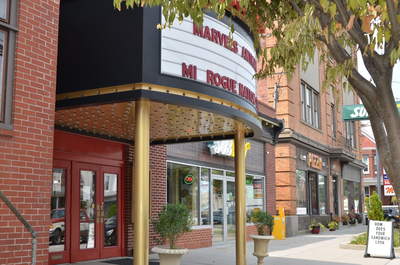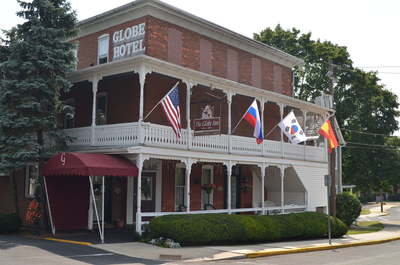|
Prior to European settlement, the Upper Perkiomen Valley (then known as the “Goschenhoppen”) was populated by North American people known as the Lenape. When European immigrants settled here, the Lenape had been gone for more than a generation. The name “Perkiomen” is said to be of Lenape derivation. It's meaning, though uncertain, may refer to the existence of cranberry bogs along the Perkiomen Valley watershed. The origin of the term “Goschenhoppen” is unknown as well.
The vast majority of the early settlers in the region were Germans who adhered to the Lutheran and German Reformed faiths. Other German settlers included Mennonites, Brethrens, Schwenkfelders and Roman Catholics. The German language was used almost exclusively; formal high German was used for religious observance and a German dialect for everyday speech. The dialect eventually evolved into what we know today as Pennsylvania Dutch (or German). The settlers were generally subsistence farmers or craftsmen who also farmed. In addition to farming, the settlers of the 18th century soon discovered the potential of their plentiful local streams for operating mills. The earliest mills, established for cutting wood or grinding grain for flour, were known as saw mills and gristmills, respectively. Mills also were built along the waters for production of gunpowder (powder mills), linseed and other plant oils (oil mills), for mixing animal feeds (feed mills), and machine shops and forges. Local tradition states that more mills were in operation along the Perkiomen Creek at the end of the 18th century than on any other waterway in the state of Pennsylvania. The mills brought prosperity as reflected in growth and good-paying jobs. Inns along the turnpikes provided food and lodging to those transporting goods to and from the area’s markets. While much has changed in the Upper Perkiomen Valley, a drive down Main Street or on rural back roads proves that much remains the same. Historic homes, old barns, and open spaces reflect the small-town charm. Some very old roads run through the Upper Perkiomen Valley. “The Great Road to Philadelphia” (known today as Route 29, Main Street and Gravel Pike) was laid out in 1735. One can still see the occasional marker that indicates “Miles to Philadelphia.” |
Goshenhoppen Historians, Inc.
Green Lane | 215.234.8953 Learn More | Visit Site | Show on Map Hereford Township Historical Society Hereford | 610.845.2929 Learn More | Visit Site | Show on Map Schwenkfelder Library & Heritage Center Pennsburg | 215.679.3103 Learn More | Visit Site | Show on Map |





